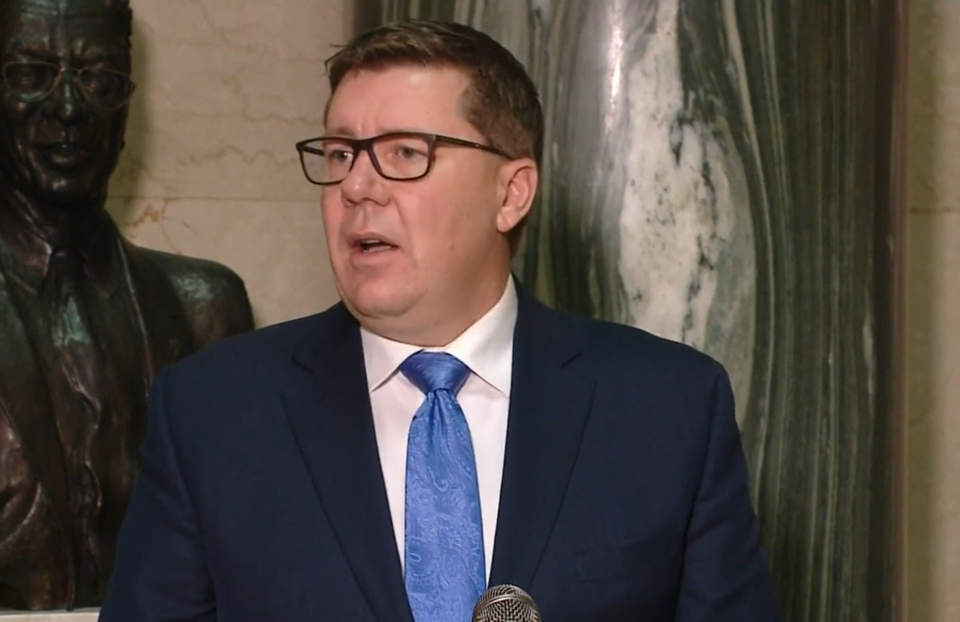Saskatchewan Premier Scott Moe has made no secret about what he thinks of pandemic restrictions in this province.
He was quick to lift restrictions last summer, and when COVID-19 cases overwhelmed Saskatchewan hospitals last fall, rather than bringing back many of them, he took the more measured approach and introduced a vaccine passport system and brought back masking in indoor spaces.
When other provinces were bringing in more restrictions to combat the Omicron variant late last year and earlier this year, Moe stayed the course. Not a surprise.
No matter what he does at this stage of the pandemic, he’s going to tick off hundreds of thousands. Bring in more restrictions? You’ll fluster those who want no restrictions. Loosen up the public health measures? You’ll tick off those who think Saskatchewan has been too lackadaisical in its recent response.
The day is coming soon when Saskatchewan will have few, if any public health orders, including masking and vaccine passports. That doesn’t mean that you can ditch the mask, because there are still going to be some businesses and industries where you’ll need one.
And you’ll have to remember those items if you want to travel. Just because Saskatchewan won’t require a vaccine passport, doesn’t mean the same for other provinces or countries.
But there are other areas that show the province is desperate to move on.
On Tuesday, he announced that the vaccine passport would be lifted, starting on Valentine's Day - a nice Feb. 14 gift for those who want to see the passports gone. Expect to see the masking mandate lifted at the end of the month.
We'll see whether he's moving too soon or not.
Reduced information, though, is a greater issue.
Last week the provincial government announced new measures for COVID-19 testing, saying the tests would be reserved for priority populations. The government is placing a greater emphasis on the take-home rapid tests and on self-isolation.
The government has also decided to curb the amount of information it’s giving to the public about the virus. Since mid-July, the government has been issuing a provincial new release once a week on Tuesdays, but it has continued to update the COVID-19 dashboard almost every day. Not only did the dashboard have information such as case numbers, recoveries, hospitalizations, tests and doses of vaccine administered, but it also separated that information down into 32 sub-zones.
The dashboard is С����Ƶ retired.
You have to wonder how many people were still checking the dashboard and the information on the Saskatchewan Health Authority Facebook page on a daily basis, but for those who do care, it was valuable, even if you questioned the wisdom on some of the sub-zone boundaries.
Perhaps the government thought it had better things to do than to update its citizens on a daily basis. While the emphasis with has shifted more to hospitalizations than cases, there’s still some good information.
(As an aside, kudos to the provincial government for breaking down the number of COVID cases to those hospitalized because of COVID, and those who contract COVID when in hospital).
The government needs to give the public as much information as possible. It’s up to us to decide whether we want to access it.
It’s also worth noting that the government has started using the line “Living with COVID” as opposed to “Stick it to COVID” for its news releases.
We all want this pandemic to be over. We all want a return to normal life, or at least as close to normal as possible. But wishing something away isn’t going to make it go away.
In the last 500 years, humanity has successfully eradicated one disease: smallpox. COVID isn’t about to be No. 2.
We certainly hope that Omicron is a sign of a weakening virus, that future variants will have diminishing impacts, and that they won’t require governments to bring in further restrictions.
As we’ve stated before, one of the frustrating elements about governments’ handling of COVID is the on-again, off-again measures.
It’s encouraging to see that governments are moving forward with easing restrictions and opening back up again, recognizing that COVID is going to be here for a long time to come.
But they have to be smart. And that means they can’t move too aggressively.




